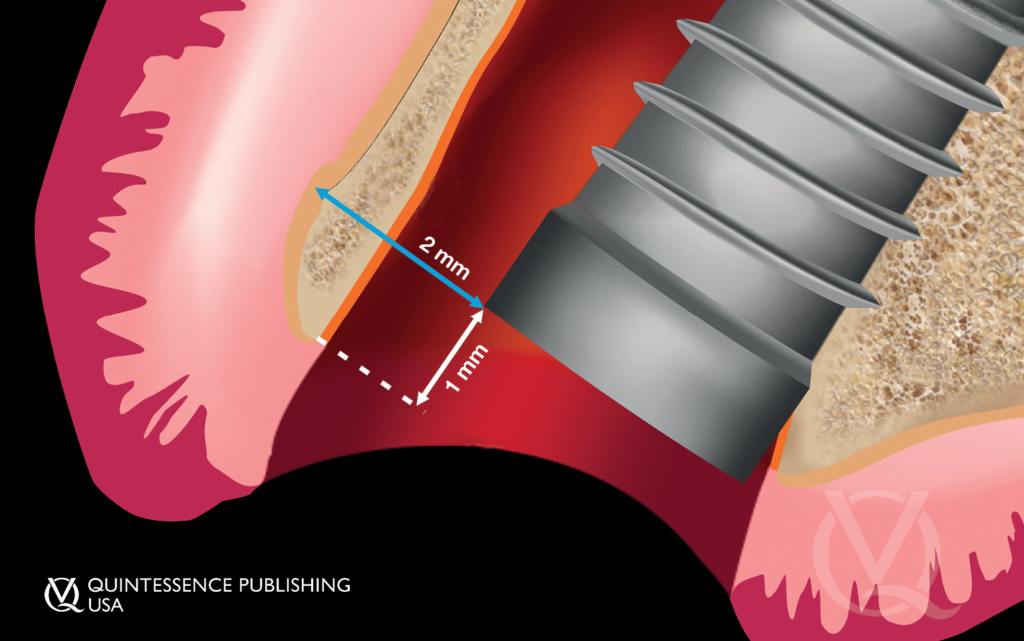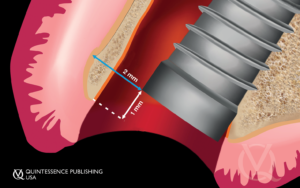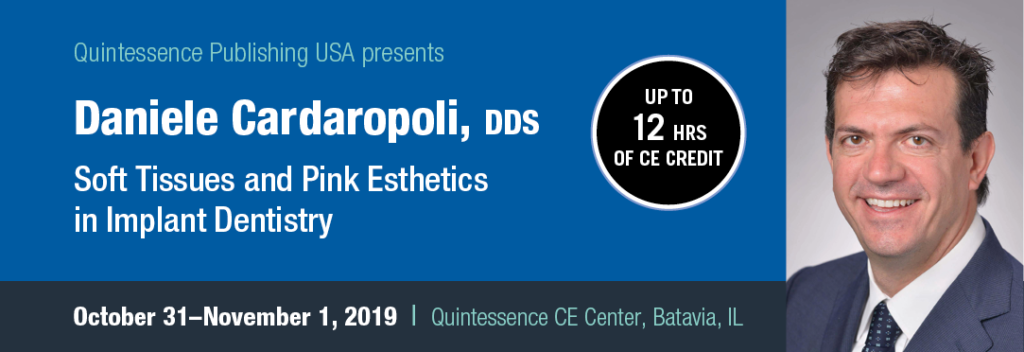Today, a website’s FAQ page is often the first place we consult for answers. Prolific lecturers and clinicians Daniele Cardaropoli, DDS, and Paolo Casentini, DDS, capitalized on this staple of the Internet in their new book, Soft Tissues and Pink Esthetics in Implant Therapy.
Each chapter is devoted to a specific topic and opens with a series of concise, punchy answers to readers’ top questions.
“After our 20 years of experience in postgraduate dental education dealing with colleagues from various countries,” says Dr Cardaropoli, “we found that the needs are always the same: to receive clear answers to specific clinical questions.”
The book’s unique structure is made up of three simple parts: questions, answers, and clinical case studies. Each chapter is devoted to a specific topic and opens with a series of concise, punchy answers to readers’ top questions. The second part of each chapter includes detailed case studies that illustrate a variety of clinical situations familiar to clinicians who deal with similar cases in their daily practices. This innovative structure provides for a clear, swift reading experience.

Pages from Soft Tissues and Pink Esthetics in Implant Therapy. Chapter opener previews the questions the chapter will address.

Pages from Soft Tissues and Pink Esthetics in Implant Therapy. Each question posed in the chapter opener is answered in detail with figures to demonstrate.

Implant-abutment connection according to the concept of platform switching: Inward horizontal displacement of the microgap prevents marginal bone remodeling.
“We selected a number of questions regarding the topics covered in each individual chapter, following the structure of the FAQ,” Dr Cardaropoli explains. “In this way, we avoid the usual ‘boring’ introduction and instead push readers into the clinical practice from the beginning. For this reason, we think the use of the textbook will be more fluent for our colleagues. They will find several options of treatment for each clinical scenario, with a detailed description of the treatment plan and the surgical approach, as well as the prosthetic rehabilitation in implant dentistry. The textbook, with its vast number of images (more than 3,500 distributed across 11 chapters) will be a tool to guide the implant treatment plan—a reference to consult before surgery.”
“We have witnessed our colleagues become increasingly interested in obtaining information to solve their surgical needs and improve their treatment plans.”
Drs Cardaropoli and Casentini can be found lecturing 42 weeks each year, all around the world. Addressing colleagues’ needs through question-and-answer sessions at these lectures is their main focus. They drew from these experiences to strategically select the top questions for inclusion in Soft Tissues and Pink Esthetics in Implant Therapy.
“We have witnessed our colleagues become increasingly interested in obtaining information to solve their surgical needs and improve their treatment plans,” says Dr Cardaropoli. “Obviously, all the information that is provided in the text is based on what we call scientific evidence, but at the same time we tried to select only the data that can really impact the clinical practice. Generally, for each topic, the questions that are asked during the conferences and courses are very similar to each other, regardless of the latitude, and we have thus had the opportunity to select the most frequent—the most significant. So, we have tried to rationalize this approach within the various chapters, with first an introductory part consisting of the questions with their answers, followed by the selection of numerous clinical cases (more than 90 in total) completely described both in the surgical and prosthetic phases.”
Dr Cardaropoli is continuing his lecture series with a stop at the Dr H.W. Haase CE Center in Batavia, IL, this October. His 2-day hands-on workshop, eponymous with his new book, will cover different surgical and prosthetic approaches for single- and multiple-tooth rehabilitations, from immediate implant placement to ridge preservation and horizontal and vertical bone regeneration to soft tissue augmentation.

Example of connective tissue graft positioning technique performed at the same time as immediate implant placement. The graft is positioned between the connective tissue and buccal cortical bone, if possible in a supraperiosteal position, using a flapless approach or by raising a flap. This graft does not obviate the need to pack the gap between bone and implant with a biomaterial.
“During the workshop, I hope to transmit the knowledge and experience I have accumulated over many years,” Dr Cardaropoli anticipates. “Starting from the very next day, participants will be able to increase the number of patients positively treated, widening their therapeutic options. Specifically, together with the description of the techniques and biomaterials used for bone augmentation, an up-to-date evaluation of the role played by the soft tissue (both from the functional and esthetic point of view) will be assessed. A decision tree will be also presented to guide the clinical selection between ridge preservation, ridge augmentation, and GBR following tooth loss. Finally, contemporary techniques for soft tissue reconstruction will be described.”
Smooth crossover of the Q&A structure between textbook and workshop is a feature of Dr Cardaropoli’s teaching style.
“Starting from the very next day, participants will be able to increase the number of patients positively treated, widening their therapeutic options.”
“My intention is to develop the workshop following the same structure that we gave to the textbook,” he says. “The guiding questions will be the link between them. The different topics will be discussed during the workshop, creating an open debate with the attendees and practicing the surgical techniques hands-on with pig jaws.”
Registration for Dr Cardaropoli’s workshop is open to the first 40 registrants here. Attendees will receive lunch; hotel transportation; CE credits; and discounts on Geistlich Biomaterials products, Omnia PTFE sutures, and Quintessence titles, including 35% off Soft Tissues and Pink Esthetics in Implant Therapy.
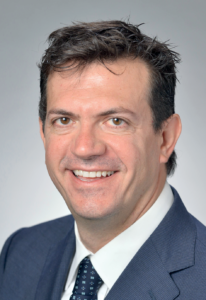 Daniele Cardaropoli, DDS, graduated with honors with a degree in dentistry and dental prosthetics and subsequently pursued postgraduate studies in periodontology at the University of Turin. He obtained postgraduate diplomas in periodontology and implantology from the Harvard School of Dental Medicine and in biomechanics from the University of Siena in Italy. In addition to his private practice in Turin, Dr Cardaropoli is the scientific director of the Institute for Professional Education in Dentistry (ProEd) and head of oral implantology at the Sedes Sapientiae Clinic. He is a member of the editorial board of The International Journal of Periodontics & Restorative Dentistry and a reviewer for several journals. Dr Cardaropoli lectures widely and is also the author of numerous publications. He is the recipient of both the Henry M. Goldman Prize for clinical research from the Italian Society of Periodontology and Implantology (SIdP) as well as the Italian Society of Orthodontics (SIDO) National Award in Clinical Orthodontics. Dr Cardaropoli is an active member of the SIdP, the European Federation of Periodontology (EFP), the Italian Academy of Osseointegration (IAO), and the Academy of Osseointegration (AO) and an international member of the American Academy of Periodontology (AAP).
Daniele Cardaropoli, DDS, graduated with honors with a degree in dentistry and dental prosthetics and subsequently pursued postgraduate studies in periodontology at the University of Turin. He obtained postgraduate diplomas in periodontology and implantology from the Harvard School of Dental Medicine and in biomechanics from the University of Siena in Italy. In addition to his private practice in Turin, Dr Cardaropoli is the scientific director of the Institute for Professional Education in Dentistry (ProEd) and head of oral implantology at the Sedes Sapientiae Clinic. He is a member of the editorial board of The International Journal of Periodontics & Restorative Dentistry and a reviewer for several journals. Dr Cardaropoli lectures widely and is also the author of numerous publications. He is the recipient of both the Henry M. Goldman Prize for clinical research from the Italian Society of Periodontology and Implantology (SIdP) as well as the Italian Society of Orthodontics (SIDO) National Award in Clinical Orthodontics. Dr Cardaropoli is an active member of the SIdP, the European Federation of Periodontology (EFP), the Italian Academy of Osseointegration (IAO), and the Academy of Osseointegration (AO) and an international member of the American Academy of Periodontology (AAP).
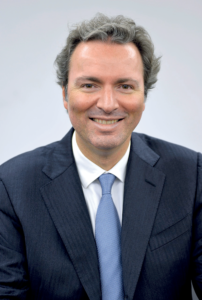 Paolo Casentini, DDS, earned his degree in dentistry from the University of Milan and subsequently attended the oral surgery and implantology program at San Paolo University Centre in Milan. He currently maintains a private practice in Milan, with a particular interest in regenerative surgery and esthetic treatment. Dr Casentini is the author of numerous journal articles in the fields of implantology and regenerative surgery as well as the online education channel. He is also the co-author of nine books on oral surgery, implant surgery and prosthetics, and advanced implantology. He has lectured in more than 40 countries and is a fellow and president of the Italian Section of the International Team for Implantology (ITI), director of the ITI Milan 1 Study Group, and an active member of the IAO and the SIdP.
Paolo Casentini, DDS, earned his degree in dentistry from the University of Milan and subsequently attended the oral surgery and implantology program at San Paolo University Centre in Milan. He currently maintains a private practice in Milan, with a particular interest in regenerative surgery and esthetic treatment. Dr Casentini is the author of numerous journal articles in the fields of implantology and regenerative surgery as well as the online education channel. He is also the co-author of nine books on oral surgery, implant surgery and prosthetics, and advanced implantology. He has lectured in more than 40 countries and is a fellow and president of the Italian Section of the International Team for Implantology (ITI), director of the ITI Milan 1 Study Group, and an active member of the IAO and the SIdP.
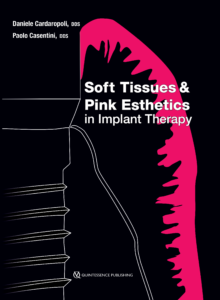 Soft Tissues and Pink Esthetics in Implant Therapy
Soft Tissues and Pink Esthetics in Implant Therapy
Daniele Cardaropoli and Paolo Casentini
Each chapter of this highly practical guide begins with a question-and-answer section that addresses clinicians’ most frequently asked questions: Why are “pink esthetics” the most important factor in determining a good treatment outcome? When is immediate postextraction implant placement preferable, and when is it safer to carry out preservation or augmentation of the ridge? When and how can a keratinized tissue band be properly reconstructed or peri-implant soft tissues be augmented? How are peri-implant esthetic complications treated? Citing from the literature, the authors review the prevailing best evidence to provide guidelines for treatment. With more than 90 clinical cases demonstrating a wide range of therapeutic needs, the authors explore compelling case examples to provide step-by-step analysis of techniques and explain the best treatment options in different clinical scenarios. This book offers answers to dilemmas that every clinician faces in daily practice and outlines clear strategies for achieving optimal treatment results.
528 pp; 3,503 illus; ©2020; ISBN 978-0-86715-815-1 (B8151); $348 Special preorder price! $278
Available October 2019
Contents
1. Quality and Quantity of Peri-implant Soft Tissue
2. Spontaneous Healing of the Socket After Extraction and Alveolar Ridge Remodeling
3. Decision-Making Criteria in Socket Management After Extraction
4. Immediate Postextraction Implant Placement
5. Alveolar Ridge Preservation and Augmentation
6. Periodontal Plastic Surgery to Optimize Soft Tissues at Peri-implant Sites
7. Peri-implant Keratinized Tissue Augmentation
8. Esthetic Augmentation of Peri-implant Soft Tissues
9. Peri-implant Soft Tissue Conditioning Using Restorations
10. Orthodontic Development for Implant Sites
11. Treatment of Esthetic Failures in Implant Dentistry
This article was written by Sarah Mondello, Quintessence Publishing.
©2019 BY QUINTESSENCE PUBLISHING CO, INC. PRINTING OF THIS DOCUMENT IS RESTRICTED TO PERSONAL USE ONLY. NO PART MAY BE REPRODUCED OR TRANSMITTED IN ANY FORM WITHOUT WRITTEN PERMISSION FROM THE PUBLISHER.

